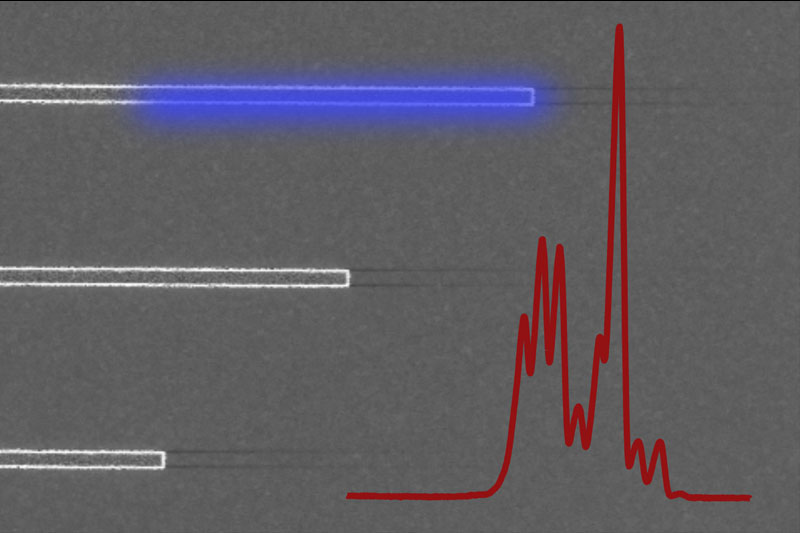Thanks to improved manufacturing processes, nanomaterials keep surprising us with unexpected physical properties. In recent years, the light-emitting properties of semiconducting nanoparticles known as "quantum dots" have surpassed existing systems to such an extent that they have become the basis for the latest generation of displays.
So far, however, one thing has not been the strength of quantum dots: coherently amplifying light in order to create a laser source. Non-radiative effects competing with the light amplification are too strong, due to the interaction of the charge carriers in conventional, mostly spherical quantum dots. A limitation that required a solution in view of the extremely attractive properties of quantum dots for the development of new types of miniaturized lasers.
A project partner of the Graz team at ETH Zurich found such a solution with "quantum nanoplatelets". These are only 10 atomic layers thick and thus show the optical properties of quantum dots. At the same time, however, they are up to 20 nm in size in the two remaining spatial directions, which greatly reduces the interaction of the charge carriers.
As part of his dissertation in the Nanooptics research group at the Physics Institute of the University of Graz, Martin Belitsch showed that a laser can actually be realized with this. His optically pumped strip-shaped waveguides, which are several micrometers long and made of densely packed nanoplatelets, are manufactured using lithographic processes and have not only proven to be efficient pulsed lasers. They also enabled the analysis of the optical gain, which is among the highest ever observed on such systems.
The data also showed an unexpected dependence of the spectral width of the laser emission on its intensity. A second project partner at the Vienna University of Technology provided the theoretical explanation in the form of an amplification-related shortening of the laser pulses. This effect expands the possibilities to control the properties of the laser emission from quantum nanoplatelets, enabling a new class of miniaturized lasers.
Martin Belitsch, Dmitry N. Dirin, Maksym V. Kovalenko, Kevin Pichler, Stefan Rotter, Ahmed Ghalgaoui, Harald Ditlbacher, Andreas Hohenau, Joachim R. Krenn
Gain and lasing from CdSe/CdS nanoplatelet stripe waveguides
Micro and Nano Engineering 17, 100167 (2022)
